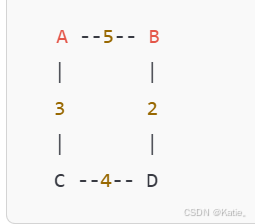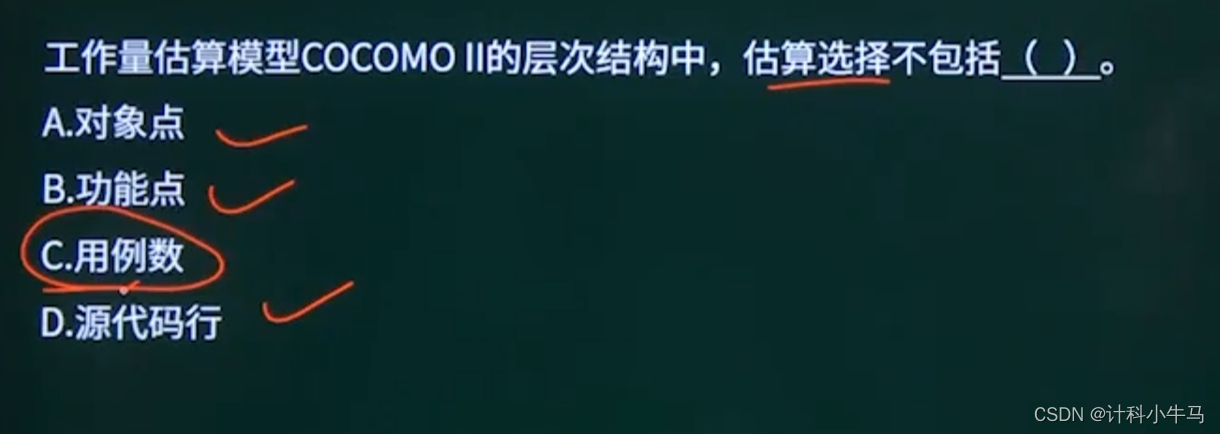比特币在很大程度上依赖于一个称为椭圆曲线的数学对象,如果没有这个数学结构,比特币就像海滩上的城堡,随时可能崩溃。什么是椭圆曲线,它的方程是这样的:y^2 = x^3 + ax + b,它的形状就像下面这样:

对于比特币,它的椭圆曲线有一个名字:secp256k1,方程是y^2 = x^3 + 7。我们不太关心椭圆曲线的功能,我们关心的是曲线上的一组特定点,让我们为曲线上的点编写一些代码。首先,我们在椭圆曲线文件夹下添加一个名为point.go的新文件,并添加以下代码:
在代码中,我们用a和b的系数初始化椭圆曲线点,并通过计算方程两边的值来检查点(x,y)是否在曲线上,如果它们不相等,我们会抛出一个panic。当我们检查两个点是否相等时,我们需要比较它的四个组成部分:a、b、x、y。
让我们尝试从main函数中创建两个椭圆点:
func main() {
/*
check pint(-1, -1) on y^2 = x^3 + 5x + 7 or not
*/
ecc.NewEllipticPoint(big.NewInt(int64(-1)), big.NewInt(int64(-1)),
big.NewInt(int64(5)), big.NewInt(int64(7)))
fmt.Println("point(-1, -1) is on curve y^2=x^3+5x+7")
/*
check pint(-1, -2) on y^2 = x^3 + 5x + 7 or not
*/
ecc.NewEllipticPoint(big.NewInt(int64(-1)), big.NewInt(int64(-2)),
big.NewInt(int64(5)), big.NewInt(int64(7)))
fmt.Println("point(-1, -2) is on curve y^2=x^3+5x+7")
}
我们通过使用其创建函数NewEllipticPoint构造point结构,前两个参数是点的坐标(x,y),如果点不在曲线上,就会发生panic,否则我们可以打印出跟随创建函数的消息,让我们运行代码进行检查,使用go run main.go,得到以下结果:
```go
point(-1, -1) is on curve y^2=x^3+5x+7
panic: point:(-1, -2) is not on the curve with a: 5, b:7
我们可以看到点 (-1,-1) 在曲线上,但点 (-1, -2) 不在曲线上,现在我们来练习一下,请检查点 (2,4)、(18,77)、(5,7) 是否在曲线上。
现在我们来讨论关键点,即给定椭圆曲线上的点 A(x1,y1) 和 B(x2,y2),我们如何定义它们的加法。我们用一条线连接这两个点,并延伸这条线,如果延伸的线可以在第三个点 C 处与曲线相交,如下所示:

那么与 C 在 x 轴上对称的点被定义为 A+B。同样适用于 A+C,当我们用一条线连接 A 和 C 时,曲线上与之相交的第三个点是 B,然后我们找到与 B 在 x 轴上对称的点,将是 A+C 的结果,B+C 也是如此。
这里的点加法定义具有以下属性:
-
交换性,即 A+B = B+A,这是显而易见的。
-
结合性,即 (A+B) + C = A + (B+C)
下图显示了 (A+B)+C:

下图显示了 A + (B+C):

有一个特殊情况,即 A 和 B 在同一垂直线上,无论我们如何延长这条线,都不可能有第三个点与曲线相交,但我们可以给这个不存在的第三点一个名称,称为单位点,标记为 I,并定义任何点 P 在曲线上,如果它与单位点相加,结果仍然是它自己,即 P + I = P:

如果 A 和 B 是曲线上的同一个点呢?我们将此情况推迟到后面讨论,现在让我们为点加法添加一些代码。首先,我们处理一个简单情况,即至少一个参与加法的点是单位点,单位点的 x 和 y 设置为 nil,我们有如下代码:
func NewEllipticPoint(x *big.Int, y *big.Int, a *big.Int, b *big.Int) *Point {
if x == nil && y == nil {
return &Point{
a: a,
b: b,
x: x,
y: y,
}
}
//first check (x,y) on the curve defined by a, b
left := OpOnBig(y, big.NewInt(int64(2)), EXP)
x3 := OpOnBig(x, big.NewInt(int64(3)), EXP)
ax := OpOnBig(a, x, MUL)
right := OpOnBig(OpOnBig(x3, ax, ADD), b, ADD)
//if x and y are nil, then its identity point and
//we don't need to check it on curve
if left.Cmp(right) != 0 {
err := fmt.Sprintf("point:(%v, %v) is not on the curve with a: %v, b:%v\n", x, y, a, b)
panic(err)
}
return &Point{
a: a,
b: b,
x: x,
y: y,
}
}
func (p *Point) Add(other *Point) *Point {
//check points are on the same curve
if p.a.Cmp(other.a) != 0 || p.b.Cmp(other.b) != 0 {
panic("given two points are not on the same curve")
}
if p.x == nil {
//current point is identity point
return other
}
if other.x == nil {
//the other point is identity
return p
}
/*
another simple case, two points on the same vertical line, that is
they have the same x but inverse y, the addition of them should be
identity
*/
if p.x.Cmp(other.x) == 0 &&
OpOnBig(p.y, other.y, ADD).Cmp(big.NewInt(int64(0))) == 0 {
return &Point{
x: nil,
y: nil,
a: p.a,
b: p.b,
}
}
//TODO
return nil
}
func (p *Point) String() string {
return fmt.Sprintf("x: %s, y: %s, a: %s, b: %s\n", p.x.String(),
p.y.String(), p.a.String(), p.b.String())
}
让我们通过将一个点与单位点相加来测试代码,结果应该是该点本身:
func main() {
p := ecc.NewEllipticPoint(big.NewInt(int64(-1)), big.NewInt(int64(-1)),
big.NewInt(int64(5)), big.NewInt(int64(7)))
identity := ecc.NewEllipticPoint(nil, nil,
big.NewInt(int64(5)), big.NewInt(int64(7)))
fmt.Printf("p is :%s\n", p)
res := p.Add(identity)
fmt.Printf("result of point p add to identity is: %s\n", res)
p2 := ecc.NewEllipticPoint(big.NewInt(int64(-1)), big.NewInt(int64(1)),
big.NewInt(int64(5)), big.NewInt(int64(7)))
res = p.Add(p2)
fmt.Printf("result of adding points on vertical line: %s", res)
}
运行上面的代码将得到以下结果:
p is :(x: -1, y: -1, a: 5, b: 7)
result of point p add to identity is: (x: -1, y: -1, a: 5, b: 7)
result of adding points on vertical line: (x: <nil>, y: <nil>, a: 5, b: 7)
如果没有点是单位点,那么我们需要一些数学推导来计算加法。给定 A(x1,y1)、B(x2,y2),我们需要知道 C(x3,y3),首先我们找到线 AB 的函数。
线 AB 的斜率为 s=(y2-y1)/(x2-x1),线 AB 的函数为 y=s(x-x1)+y1
将 y 代入方程 y2=x3+ax+b,得到:[s(x-x1)+y1]2=x3+ax+b,将左侧展开并移至右侧,我们得到:

我们确定 x1、x2、x3 是上面和下面方程的解:

根据维埃塔定理,相同阶次的项的系数应该相等,因此我们有:
s^2 = x1+x2+x3 => x3 = s^2 - x1 - x2
这给了我们 x3 的值,我们可以将其代入线的函数中得到 y3:
y=s(x-x1)+y1=> y3=s(x3-x1)+y1
现在我们得到了 C,并记住我们需要将其在 x 轴上反射,因此 A+B 为 (-s^2-x1-x2, -[s(x3-x1)+y1])。
让我们为此编写代码:
func (p *Point) Add(other *Point) *Point {
...
//找出线 AB 的斜率
//x1 = p.x, y1 = p.y, x2 = other.x, y2 = other.y
numerator := OpOnBig(other.y, p.y, SUB)
denominator := OpOnBig(other.x, p.x, SUB)
//s = (y2-y2)/(x2-x1)
slope := OpOnBig(numerator, denominator, DIV)
//-s^2
slopeSqrt := OpOnBig(slope, big.NewInt(int64(2)), EXP)
x3 := OpOnBig(OpOnBig(slopeSqrt, p.x, SUB), other.x, SUB)
//x3-x1
x3Minusx1 := OpOnBig(x3, p.x, SUB)
//y3=s(x3-x1)+y1
y3 := OpOnBig(OpOnBig(slope, x3Minusx1, MUL), p.y, ADD)
//-y3
minusY3 := OpOnBig(y3, big.NewInt(int64(-1)), MUL)
return &Point{
x: x3,
y: minusY3,
a: p.a,
b: p.b,
}
}
让我们测试上面的代码:
func main() {
//C = A(2,5) + B(-1, -1)
A := ecc.NewEllipticPoint(big.NewInt(int64(2)), big.NewInt(int64(5)),
big.NewInt(int64(5)), big.NewInt(int64(7)))
B := ecc.NewEllipticPoint(big.NewInt(int64(-1)), big.NewInt(int64(-1)),
big.NewInt(int64(5)), big.NewInt(int64(7)))
C := A.Add(B)
fmt.Printf("A(2,5) + B(-1,-1) = %s\n", C)
}
上述代码的运行结果是:
A(2,5) + B(-1,-1) = (x: 3, y: -7, a: 5, b: 7)
如果你有疑虑,请使用纸和笔检查结果,我可以保证结果是正确的。还有一种特殊情况需要处理,那就是当 A=B 时,在这种情况下,线 AB 变成了椭圆曲线的切线:

这次我们不能轻易地获得线的斜率,我们需要微积分的帮助。为了找到曲线上的切线斜率,我们需要计算该点的导数,对于曲线的函数 y^2 = x^3 + ax+b,我们对两边的点 x 进行导数计算,得到: d(y^2)/dx = d(x^3+ax+b)/dx -> 2y * dy/dx = 3x^2 + a -> dy/dx = (3x^2+a)/2y,因此我们只需更改斜率的计算,其余步骤保持不变,以下是代码:
func (p *Point) Add(other *Point) *Point {
...
//找出线 AB 的斜率
//x1 = p.x, y1 = p.y, x2 = other.x, y2 = other.y
var numerator *big.Int
var denominator *big.Int
if p.x.Cmp(other.x) == 0 && p.y.Cmp(other.y) == 0 {
//两个点相同,计算切线的斜率
//分子为 (3x^2+a)
xSqrt := OpOnBig(p.x, big.NewInt(int64(2)), EXP)
threeXSqrt := OpOnBig(xSqrt, big.NewInt(int64(3)), MUL)
numerator = OpOnBig(threeXSqrt, p.a, ADD)
//分母为 2y
denominator = OpOnBig(p.y, big.NewInt(int64(2)), MUL)
} else {
//s = (y2-y2)/(x2-x1)
numerator = OpOnBig(other.y, p.y, SUB)
denominator = OpOnBig(other.x, p.x, SUB)
}
...
}
让我们测试这个案例:
func main() {
...
//B=(-1,-1) C=B+B
C = B.Add(B)
fmt.Printf("B(-1,-1) + B(-1,-1) = %s\n", C)
}
上述代码的结果是:
B(-1,-1) + B(-1,-1) = (x: 18, y: 77, a: 5, b: 7)
完整代码获取点击此处
更多有趣内容请查看:
http://m.study.163.com/provider/7600199/index.htm?share=2&shareId=7600199
也可登录我的公众号:Coding 迪斯尼
![[免费]基于Python的Django+Vue3在线考试系统【论文+源码+SQL脚本】](https://i-blog.csdnimg.cn/direct/6e930f3dde3c4f2bb9cf4501c8642e1c.jpeg)


















